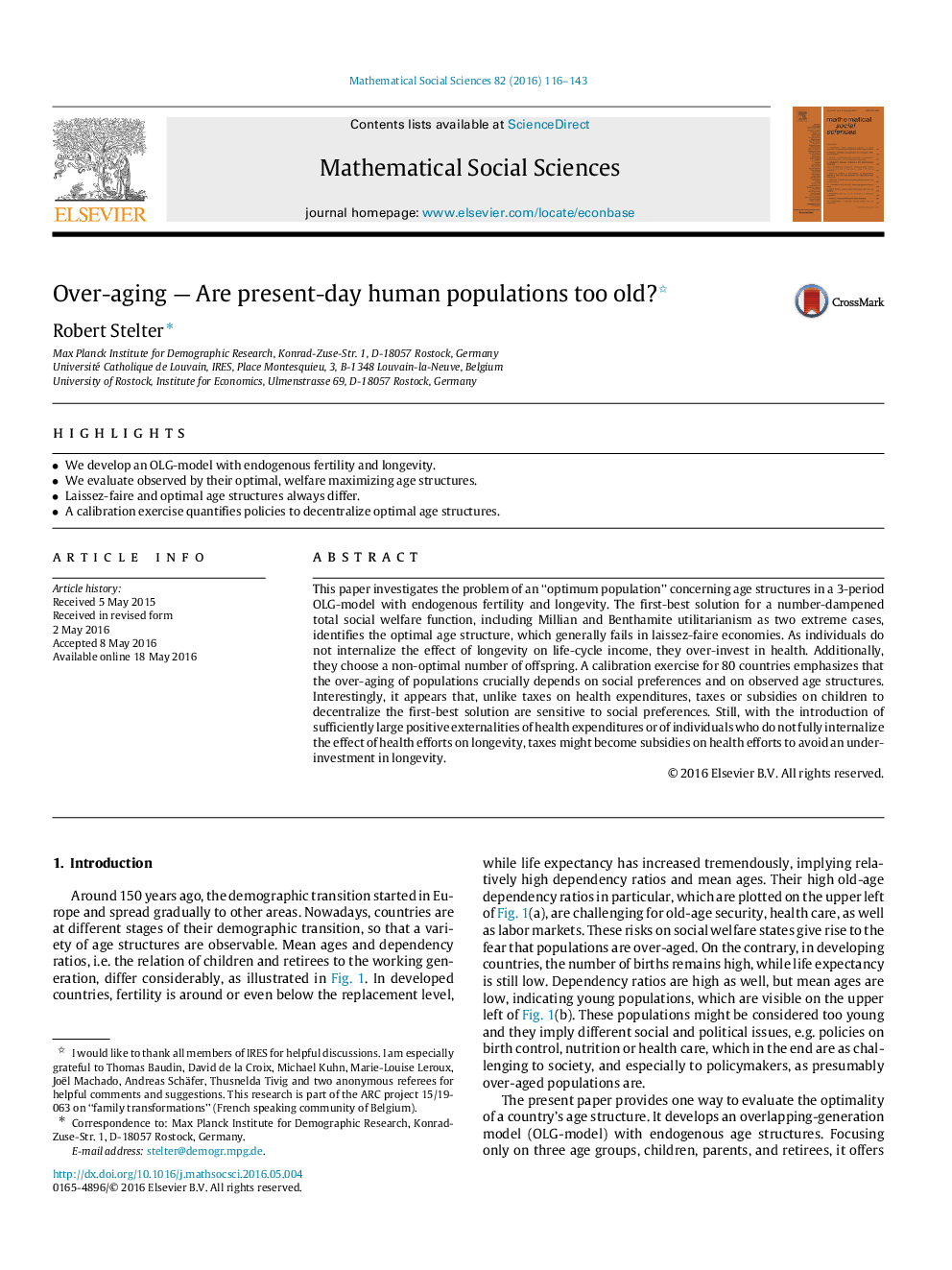| کد مقاله | کد نشریه | سال انتشار | مقاله انگلیسی | نسخه تمام متن |
|---|---|---|---|---|
| 972156 | 1479736 | 2016 | 28 صفحه PDF | دانلود رایگان |

• We develop an OLG-model with endogenous fertility and longevity.
• We evaluate observed by their optimal, welfare maximizing age structures.
• Laissez-faire and optimal age structures always differ.
• A calibration exercise quantifies policies to decentralize optimal age structures.
This paper investigates the problem of an “optimum population” concerning age structures in a 3-period OLG-model with endogenous fertility and longevity. The first-best solution for a number-dampened total social welfare function, including Millian and Benthamite utilitarianism as two extreme cases, identifies the optimal age structure, which generally fails in laissez-faire economies. As individuals do not internalize the effect of longevity on life-cycle income, they over-invest in health. Additionally, they choose a non-optimal number of offspring. A calibration exercise for 80 countries emphasizes that the over-aging of populations crucially depends on social preferences and on observed age structures. Interestingly, it appears that, unlike taxes on health expenditures, taxes or subsidies on children to decentralize the first-best solution are sensitive to social preferences. Still, with the introduction of sufficiently large positive externalities of health expenditures or of individuals who do not fully internalize the effect of health efforts on longevity, taxes might become subsidies on health efforts to avoid an under-investment in longevity.
Journal: Mathematical Social Sciences - Volume 82, July 2016, Pages 116–143